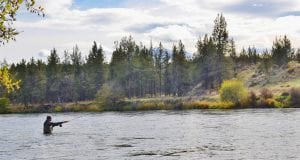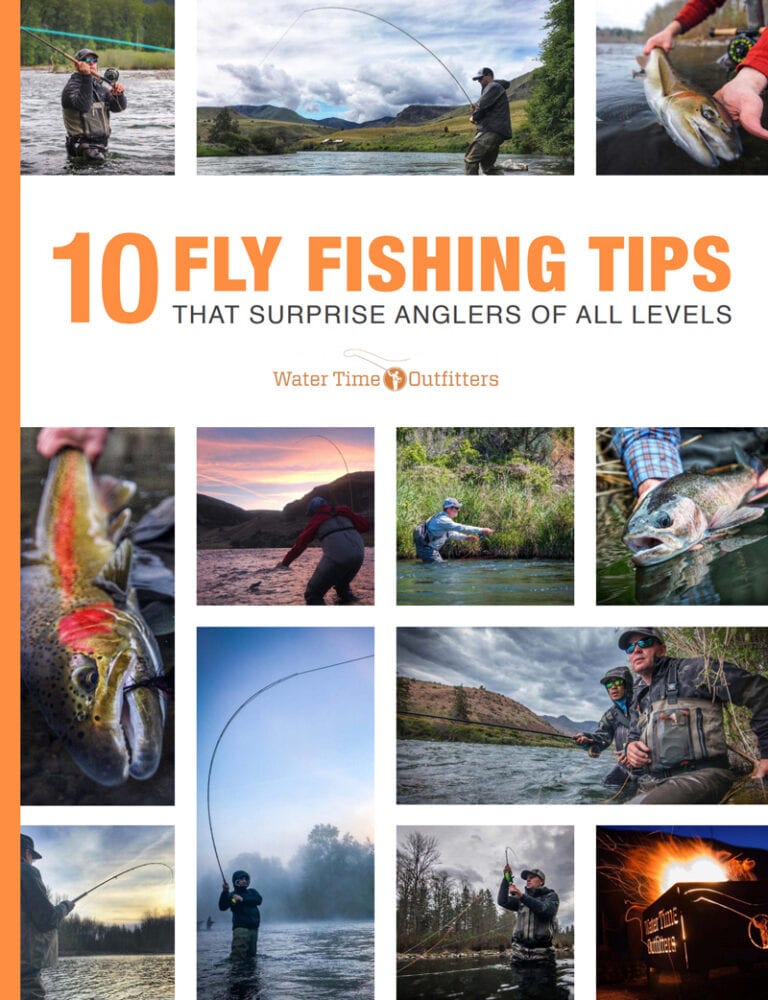Spey Casting – How to Improve Your Spey Casting

One thing we try to do as guides is help our spey anglers be more effective in every way- one big way is casting. Guiding anglers every day out on Oregon’s finest rivers I find that better casters generally catch more fish. Coaching customers to more effective spey casting generally boils down to three simple things. These three details of the cast when properly executed will generally result in a good cast. To improve your casting no-matter where you are at keep these principles in your “spey casting tool box”.
First, properly form the D-loop. The D-loop consists of the flyline extending behind the rod similar to making a roll cast. The angle and amount of line behind the rod is important. A skinny D-loop generally will have less power; look for a full D-loop to optimize power in your cast. I think of this as similar to a sail on a sail boat. A full sail will move the boat and of course the opposite is true.
The angle your line extends back from the rod tip into the D-loop is important too. Some casters struggle when the D-loop is sent back at an upward angle or vice-versa. The downward angle can be difficult to launch as well. Ideally the D-loop is full and extends back opposite of your forward cast and is at it’s best when more in line with your rod tip elevation (which should be at approximately 45 degrees).
Second, is line stick; that is how much line is touching the water. Spey casting is dependant on line in the water to make the cast but this is a careful balance. Too much line in the water and you hear a big rip with line tearing off the water killing your casting power. Too little line stick and you hear a whipping sound- the fly lifting off the anchor with nothing for your forward casting power to pull against. Just the right amount of line stick is the fly and leader anchored in place just barely on the surface of the water. Remember that the Skagit cast is a continuous motion cast- pauses cause slack and too much line stick. By finding the right amount of line stick you will acheive better casting with less energy.
Third, is alignment; this is often the most difficult as it is hard to see. Spey casting is often about changing angles. Angles of the fly and line from the hangdown at the end of the swing to the delivery at 90-45 degrees. This changing of angles is one of the more challenging aspects of the cast to get right. The best way to nail the most powerful cast is when the first two items we talked about are correct and the alignment is spot on. To get perfect alignment use the 180 degree rule. That is- your D-loop should be headed back opposite of where you want your forward cast to go – or 180 degrees from it. This can be challenging with the double spey as it requires a full sweep around to the proper angle before casting.
If you cast is out of alignment it will leave you clues. Often is shows up as a forward cast that goes out and curves. This can be the result of lack of alignment in two areas. First, if your D-loop is not properly aligned and second, if your anchor point is too far away from you. Getting proper alignment in your cast is very important and leads to more improved spey casting.
Remember these three things: D-loop formation, line stick, and alignment to move your spey casting to the next level.
Check out Water Time Outfitters line-up of fly fishing classes: https://watertimeoutfitters.com/classes-and-schools/
Good luck on the water!
Wishing you better casting,
Rob Crandall

